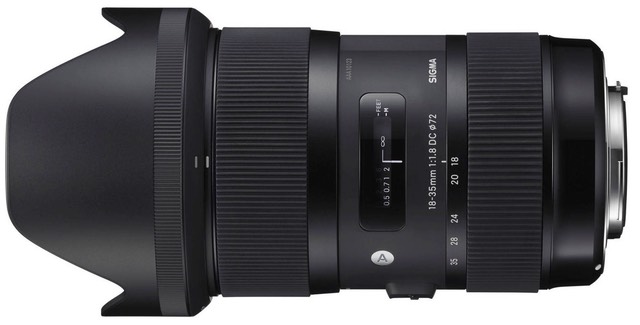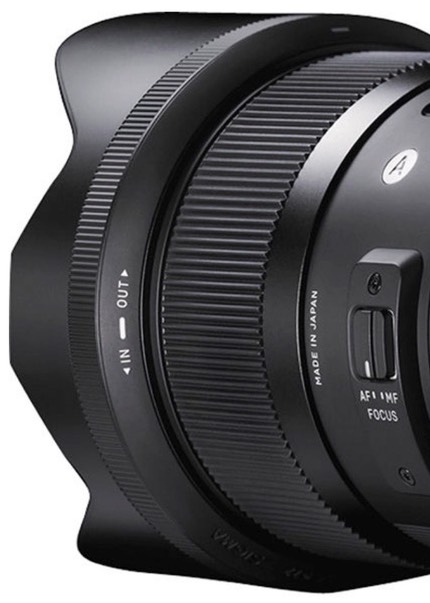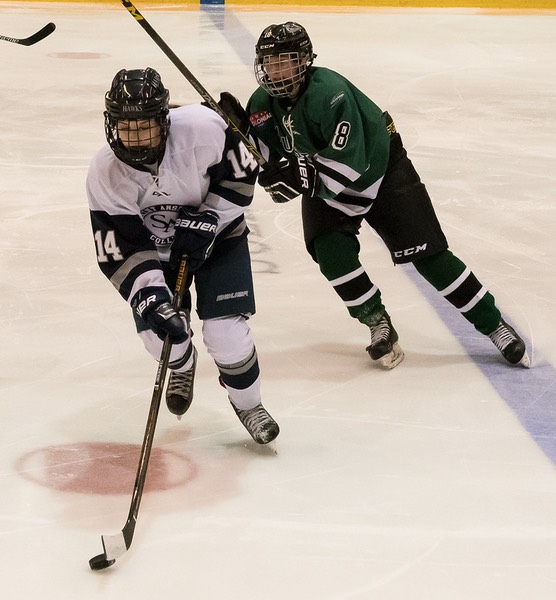Sigma 18-35mm F18 Art Dc Hsm Lens for Pentax Review

What is It?
The Sigma eighteen-35mm f/1.8 DC HSM Art lens is an anomaly in the zoom lens market: a seriously fast-discontinuity, crop-sensor lens with a limited focal length range.
Remember, the DX bodies are at most a one-stop disadvantage to the FX bodies, all else equal. So wouldn't we all love a set of f/2 DX zooms to showtime that disadvantage and then that we can proceed to shoot DX?
The 20mp D5/D500 combo really hammers home this betoken. Bear with me, we accept to talk nigh cameras a bit to understand why this lens is important.
With the D5 and the 24-70mm f/2.8E you have a massive combination that weighs in at 89 ounces (2475g). With the D500 and the Sigma 18-35mm f/1.eight you have a much smaller and lighter 58.9 ounces (1670g) philharmonic. The xviii-35mm is 28.half dozen ounces (811g) of that.
Of course, all is non equal still, as the Sigma is xviii-35mm, which is really 27-52mm effective. So we're missing the 24mm and 70mm ends of the zoom. Even so, if you're mostly shooting 28mm, 35mm, 50mm types of imagery, this Sigma is going to requite you what you desire.
Let'due south await around the lens a bit. This is a Sigma Art lens, significant a high degree of optical and physical refinement that is professional in grade. Nosotros've got four aspherical elements in this lens too equally five special depression dispersion elements, and then nine of the 17 elements have some special glass component to them, plus we accept Sigma's usual Super Multi-Layer coating to reduce reflections from all that glass.
The maximum aperture is a constant f/1.8, which is something new for zoom lenses, especially DX ones, with a minimum aperture of f/16. The aperture diaphragm itself is the usual 9-blade rounded design.
Minimum focus distance is 11 inches (28cm), with a maximum magnification ratio of i:4.3. Non quite macro range, but certainly close enough focus for the types of shooting you lot're probable to do with this lens.
Up front we accept a 72mm filter band and an included bayonet lens hood. The lens itself isn't modest, being almost five inches long before you put the hood on (121mm), and it'south a adequately constant 3+" (78mm) in diameter from stalk to stern. The LH780-06 lens hood is a deep petal design, adding another 2" or so to the length. Strangely, information technology'south marked "In -- Out" instead of "On -- Off" or something more than suitable.
The zoom ring is marked at 18, 20, 24, 28, and 35mm, and is the ring nearest the camera torso. Information technology turns from minimum focal length to maximum in less than a quarter plow.
The focus ring is up front and goes from minimum focus to maximum in simply over a quarter turn. Oddly, there's a knurled area on the stationary bottom of the lens, though the two rotating rings are easily identified by feel. Focus markings:
- Feet: 0.92, ane, 1.25, 1.v, 2, 3, half-dozen
- Meters: 0.28, 0.35, 0.4, 0.5, 0.7, i, two, infinity
As yous might notation from those numbers and the short ring turn, a lot of the focus throw on this lens deals with the near space (1-6' or 0.28-2m). Focus bigotry by focus band for longer distances is a little brusk on ring rotation (though the lens does become substantially beyond infinity, every bit exercise well-nigh lenses with low dispersion glass to allow for temperature variations).
Both focus and zooming are internal. The lens does not alter in size nor does the front element rotate during any changes. At that place'southward merely i switch on the lens, which controls whether the lens is in autofocus or manual focus mode.
Sigma makes a scrap of noise nigh the thermal nature of the lens barrel: it's made of a TSC compound material that is durable but resistant to temperature and the surroundings. What that means is that the barrel is not metal, though the texture of the textile may make you think it is.
The 18-35mm is available in Nikon F, Catechism EF, Sigma SA, Pentax Thou, and Sony Blastoff mounts, and is made in Nihon. As with all Sigma Art lenses, this lens is uniform with the Sigma USB Dock for focus tuning and software updates. As well, you tin have Sigma convert your lens from ane mount to another for an additional fee.
Price of the lens is US$799, and it is fabricated in Nippon. Versions are available for the Canon EF-S, Nikon DX, Pentax One thousand, Sigma SA, and Sony Alpha mounts.
Source of the review lens: purchased from dealer stock.
Sigma's page for the lens
How's it Handle?
The zoom band on my lens is very stiff and resistant to turning. That doesn't bother me at all, as information technology is smoothen when y'all do exert enough forcefulness on information technology, simply tends to stay where you exit it.
The focus band is another story. Doing focus overrides while in autofocus mode the ring is a bit grabby on my sample. In manual focus manner the band is very smooth, but in that location'southward a distinct rubbing sound in the heart of the focus range that's annoying. Curiously, that rubbing audio never occurs in autofocus.
While the lens hood has a nice grip texture ring to help yous mount and unmount it, my sample is extremely tight and rough in this respect. The good news is that the hood stays on, the bad news is that I have to pay some attention and have a good grip to get it off. Equally with the fifty-100mm f/1.8, there's the odd marking for positioning the hood for putting it on, and the odd markings for taking it off (In/Out).

Still, there's nothing truly problematic most the lens handling. It's very appropriately sized for DX bodies and the rings definitely avert the abrasive tendency of some lenses to skid quickly from where you set up them.
How'due south it Perform?
Autofocus: The HSM motor in this zoom is fast. Faster than about of the Nikkor AF-South primes and a few of the AF-Southward zooms. The lens tracks well with moving subjects, and it tends to snap to focus, even across a big leap of altitude.
But there are two things you need to know about this lens and autofocus, one very small, one major.
The small issue is that the lens is a piddling more jittery on stationary objects than my Nikkors, which just tend to stay in one focus position. The Sigma doesn't motion much, simply you will hear it making faint adjustment sounds at times it probably shouldn't be. Fortunately, as I noted, the focus motor is fast, so I've never caught this equally producing an unsharp shot.
The major issue has to exercise with the D500, the nigh likely camera you lot'd stick this lens on. In the central selectable autofocus sensors (for sure the most primal 9 and as far as I can tell the total central 25) at that place's no issue at all. The lens focuses as you'd expect. Yet, if you rely on the selectable autofocus sensors to the left and correct edges—the outer 30—you're going to become misfocused images.
This appears to have to do with physical limitations with the phase detect array. Since Nikon has pushed the array so broad with such pocket-sized individual sensors, the far-border sensors have issues seeing the full information from some really fast lenses. This wasn't true with the Sigma 50-100mm f/ane.eight, but is true of the Sigma 18-35mm f/i.eight, and that probably has to do with the angle the lite is coming off the rear elements.
In practice, this means on a D500 with the 18-35mm f/1.8 y'all probably need to avoid Car, 3D, and Dynamic 153 autofocus settings, and effort to continue your selected cursor in the center three columns for Dynamic 72, and in the center v columns for Dynamic 25 and Grouping AF. Also, don't use Single area outside the central 25 selectable areas. For the types of shooting I've been using the 18-35mm for, this hasn't been limiting, but it does pose issues for those who want to focus well off centre.
Note that I didn't accept this issue with the D7200, and I wouldn't look information technology with the D3xxx and D5xxx cameras, either.

Focus follows fast action well. This is an image from a sequence where the skater was coming directly towards me and did a quick change of direction. The unabridged sequence is pretty much dead on. (For those that desire to know, the lesser cursor of Group AF was on the skater'due south face up or sometimes chest during this sequence, beingness moved via the thumbstick. Why the lesser one? Because I didn't want the camera to pick upward the stick in forepart of her. Group AF works by selecting the nearest affair, so yous as driver demand to make sure that you have the selection fabricated in such a way that you're forcing it to the thing y'all want in focus. This ofttimes means that my group of five sensors is NOT centered on the head.)
Sharpness: In the eye this lens is what I'd consider precipitous. It's very skilful at f/1.8, excellent at f/2.8 to f/five.six. 18mm is the strongest focal length by a scrap beyond the whole frame, with 35mm beingness the weakest by a scrap, at to the lowest degree upwardly through nigh f/5.half-dozen where everything looks nearly the aforementioned.
Edge of frame is a bit of a unlike story. You really take to stop downwardly to f/4 to become to what I might phone call very good corners. Faster than that the corners are only good. Curiously, the corners flop from being better at 18mm and f/ane.8 than at 35mm and f/1.8, to being worse than 35mm at f/4 and staying that way. Not a big difference, but non one that I was expecting given the central performance.
Overall, this lens has to be considered optically very expert, but it's non every bit edge-to-edge precipitous every bit most recent full frame Nikkors have been. This Sigma is more similar traditional lenses where the corners are weaker than the center at all apertures.
This lens has no noun focus shift, though it may have a very slight scrap of field curvature, particularly at the long cease.
Astigmatism and coma are relatively well correctly, specially for a fast zoom lens.
Aberrations: In that location's minimal but visible longitudinal chromatic aberration at f/one.8. Far better performance than i would expect from a very fast zoom, but still in the realm where yous're going to desire to exist careful about using f/i.8 on some loftier-contrast field of study matter without correction.
Lateral chromatic aberration is clearly visible and needs correction in the lower range of the zoom, not so much at the higher end. 24mm turns out to exist the worst offender, with 18mm not far behind. You'll desire to correct results from those focal lengths. But 35mm is downwardly to levels that are ignorable, especially broad open, which was surprising.
Linear Distortion: Yous'll want to pay attending hither. There's clear barrel distortion of almost two% at the broad finish, articulate pincushion distortion at the long cease of a bit over 1%. I think you'll want to correct both the extremes. Midway at 24mm there's naught to right, basically.
Vignetting: As expected, wide open at that place's articulate vignetting of about 1.3 stops, and that's pretty much gone by f/iv. When the lens vignettes, it does so rapidly in the corners, less so from the central area. On an FX body in that location's a strong boxed cutoff with tiptop eye and lesser center arcs visible at 18mm. By 24mm, the lens is probably usable on FX bodies with the 5:four ingather. At 35mm the full frame is rendered, though vignetting is still substantive.
Flare: Like its twin, the l-100mm f/1.8, the eighteen-35mm f/1.8 has ane potentially fatal flaw: very clear and abrasive flare patterns, both with the low-cal source in frame also every bit when the light source is just out of frame. This is not a contre jour shooter'south lens: don't shoot into the sun with it unless yous enjoy dark-green and magenta lens reflection echoes.
Final Words
Lots to like and a few things to ponder with the 18-35mm f/1.8 Art.
Optically, it performs far amend than y'all'd e'er look a cropped prototype circle f/1.8 zoom to perform. Far ameliorate. It's sharp enough to pass for a reasonable prime, though the extreme corners do tend to exist a chip weaker. Since Nikon hasn't gotten effectually to making an 18mm f/one.8 DX prime (or a 24mm 1), here we accept the 28mm, 35mm, and 50mm equivalent primes all wrapped into one larger package, and performing optically about equally nosotros would hope for a fast DX prime. That's the great news.
The less-peachy news is that we can't get to 24mm equivalent. That change alone would have fabricated this lens a "must have" for every DX shooter. Because we're starting out well-nigh 28mm equivalent instead, you can't quite say that the xviii-35mm f/1.eight Art truly subs for a wide angle to telephoto zoom. It's really a slightly wide to normal zoom. And that's going to bother some, as the overall focal range covered by this lens is somewhat small-scale.
The other matter that's going to bother some is that they want to put information technology on a D500, where the autofocus event I described means that yous accept to restrict the camera to the central areas for focusing. I've dealt with a number of folk who've but started shooting with this lens on a D500 and accept been disappointed with their results until we restricted their autofocus sensor usage.
The other thing that stops some from buying the lens is the lack of optical stabilization. True, it doesn't accept whatsoever. It besides is letting in more light at maximum discontinuity, giving yous shorter shutter speeds. I actually don't find the lack of optical stabilization an issue with this lens. If I can't agree 1/threescore second at 35mm steady, then it's time for me to find another job. (Why 1/sixty? Because that's the slowest shutter speed I'd tend to utilise when there's any chance of motion in the shot, even slow human motion. If I need more light than f/ane.8 and 1/60 and the highest ISO I can tolerate, I need to provide that.)
So the 18-35mm f/i.8mm is not a perfect lens. The question is whether it's good enough that you lot should have it in your bag. My respond to that is a very loud probably. Many event shooters are not going to like the 18mm lower focal length limit, I remember, and they're going to be bummed when they have to avoid sure focus settings on their D500. For me, even so, the eighteen-35mm f/ane.8 is frequently on my D500 body, and I just live with its limitations considering the optically quality is in that location, and it gives me dorsum that stop I'g losing compared to my D5 and the 24-70mm f/2.8E, at least in the equivalent focal range.
At The states$799 I'd say that it's very appropriately priced for what it does. And what it does is give you a 28mm, 35mm, and 50mm equivalent prime number level of quality, and at f/1.8. Given Nikon'due south neglect of the DX lens line, the Sigma 18-35mm f/1.8 Fine art is filling in some of the gaps with just one lens, though with a somewhat bigger lens than the primes would be. Though and then again, three prime spaces in my bag would probably take up more room than the Sigma does.
I like the Sigma xviii-35mm f/i.eight Art, and it's staying in my bag until something ameliorate comes along. What did it kicking out? Well, the Sigma 17-50mm f/2.8 and the Nikkor 16-80mm f/2.8-4. Most of the time. Some of the time I demand the 16mm of the latter. But if I need the long finish of mid-range, I just put on the Sigma 50-100mm f/one.eight Fine art, which is besides now in my DX bag.
And that's where I concluded up liking the Sigma: when the matching 50-100mm f/one.8 Fine art showed up, the two f/ane.8 Sigma lenses pretty much solved my 28-150mm equivalent focal lengths for DX. Stick the Tokina 11-20mm f/2.8 in for the wide end, and and so something for long reach (say the 300mm f/four), and I've got a very competent DX handbag. And it'southward non all that large a bag nor is it particularly heavy.
Recommended (2016 to present) (conditional; don't rely on outer focus sensors)
Support this site by purchasing from the post-obit advertiser (who is currently offering it for US$100 less, and throwing in the USB dock and a filter):
Source: https://www.dslrbodies.com/lenses/nikon-lens-reviews/third-party-lens-reviews/sigma-18-35mm-f18-art-lens.html
0 Response to "Sigma 18-35mm F18 Art Dc Hsm Lens for Pentax Review"
Post a Comment